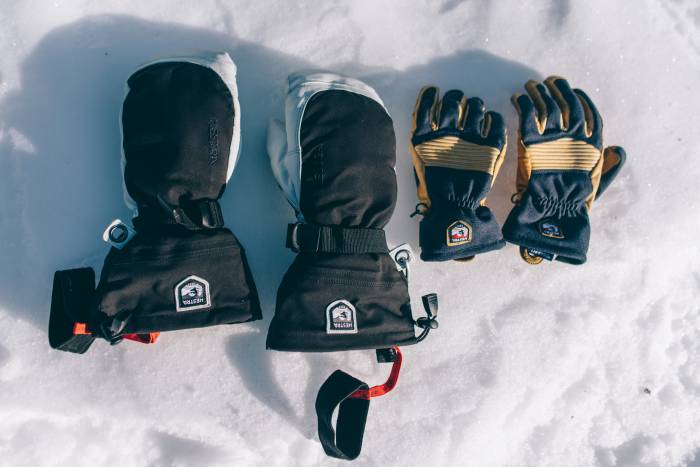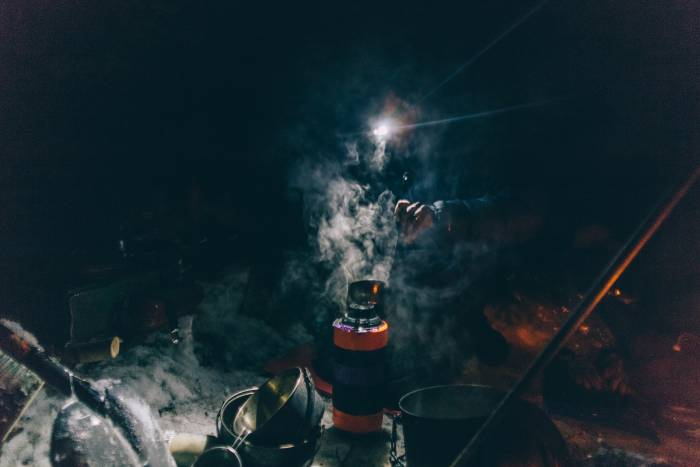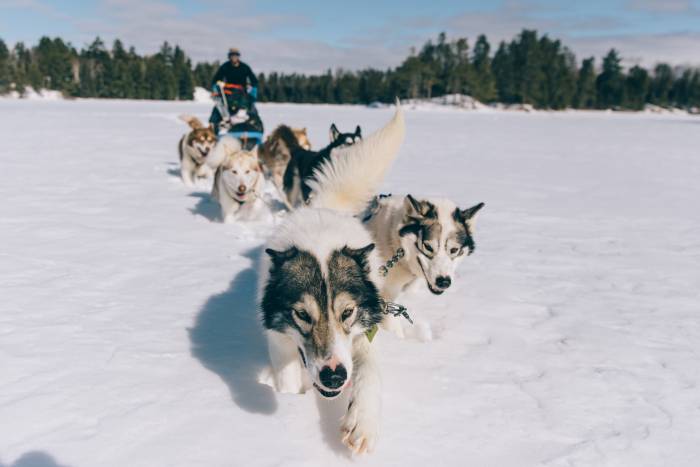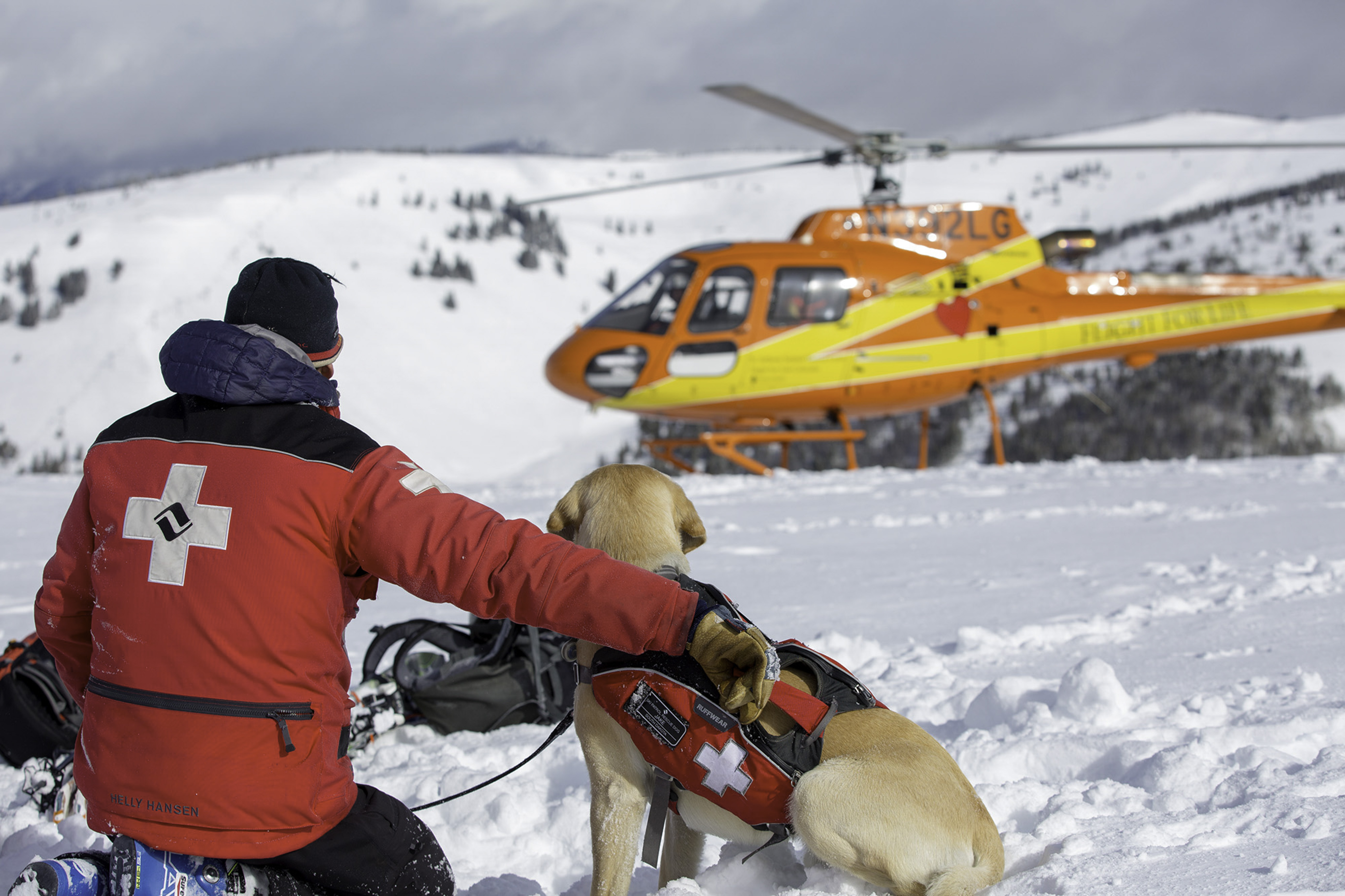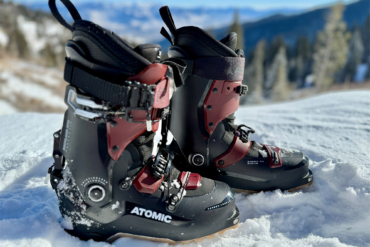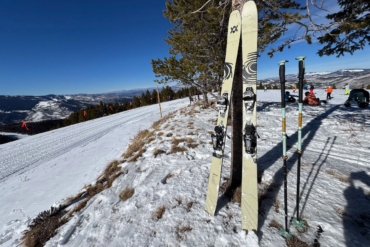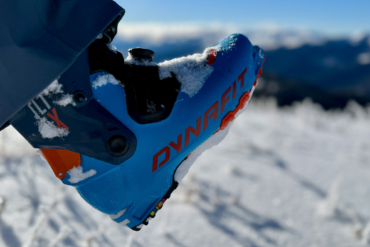Cold-weather camping takes specialized skills. We traveled to the Boundary Waters Canoe Area in winter with local expert Dave Freeman to learn how he camps out in northern Minnesota all year ’round.
A last-minute glance at NOAA called for a low of -2 degrees Fahrenheit, so I hurriedly stuffed a third puffy into my pack before heading to the airport. En route to northern Minnesota for a 3-day dog sledding trip with Wintergreen Lodge, I had enough layers to resemble the Michelin Man.
Wintergreen encourages guests to be hands-on, helping feed the dogs, tie them to the sled, and run the dog team yourself. Filled with nerves and excitement, I helped pack our food and gear into the sled before we opened up the maps to look at route options.
Dave Freeman, an expert who spent a year in the Boundary Waters Canoe Area, and I agreed to keep the plan fairly loose, running the dogs as far as the conditions and our energy permitted. We’d start by following trails to the wilderness boundary, then transition to running across frozen rivers and lakes, aiming to set up camp before the sun dipped below the horizon.
Our goal was to follow the Kawishiwi River upstream and reach a part of the Boundary Waters no one had explored recently, breaking trail and seeing something new. This area, the BWCA, is the most popular wilderness in the country during the summer. But it’s desolate in the winter.
Although the route would be decided by the seat of our pants, our plan for staying warm was the opposite — both logical and methodical. During our 3 days camping along the Canadian border, I learned a few things from Freeman, who’s winter camped for more than 20 years.
Here’s my advice, building on his basic tips for sleeping in the cold.
Winter Camping Tips: How to Stay Comfortable
Don’t forget your legs.
You wouldn’t dare winter camp without an insulated jacket, so why neglect your legs? I brought along a pair of Mountain Hardwear Ghost Whisperer Pants, putting them on before sunset and wearing them until after sunrise — more than half our trip.
Packable and lightweight, these pants are easy to stow and make for a warm, insulating layer for your legs.
Double up on gloves.
The most important part of winter camping is heat management — staying warm without overheating and sweating, especially for small appendages at risk of frostbite. During the day, I relied on a light leather glove, which allowed dexterity to manage dogs and open packs without exposing my hands to the cold.
At night, I’d throw on a pair of Hestra Extreme Mitts, which kept my hands warm even when ambient air temps dropped below zero. Gloves take a long time to dry, so having a third pair also isn’t a bad idea.
Insulate your feet.
Depending on the type of trip, you’ll need to think carefully about footwear. Down booties are a nice in-camp option, but I opted for Steger mukluks, more traditional footwear that is incredibly versatile.
At night, I’d sleep with my boot liners on my feet to help dry them out and to keep my toes warm.
Snack often, but keep it quick.
This applies to skiing, snowshoeing, or dog sledding — every couple hours, Dave and I would stop, eat a handful of trail mix, some meat and cheese, or a granola bar, and continue on our way. Each break was 5 or 10 minutes at the most.
This allowed us to get the necessary calories without getting too cold at a longer lunch stop. It’s worth noting that you’ll burn a lot of calories while traveling in cold temps, so bringing extra food and eating a lot are highly encouraged.
Elevate your fire.
Each night, we built a fire to stay warm. But before we started the fire, we would build a small log platform for it to sit on, and brought a large, metal fire pan to keep the fire from burning down into the snow.
This helps a fire burn hotter and more consistent and, in turn, keeps you warmer.
Insulate your water bottle.
We carried basic Nalgene bottles, insulating them with thick neoprene sleeves. This keeps them from freezing quickly, which otherwise can be a huge pain.
When it was really cold, we’d even put our bottles into the sleeves upside down, so that the caps wouldn’t freeze shut.
Use a closed-cell pad — or three.
While air mattresses are light and easier to pack, they often deflate when placed directly on top of the snow. To avoid this, bring along a closed-cell mattress, like a Therm-a-Rest Z Lite, to insulate your inflatable pad.
If it’s really cold, consider bringing two or three closed-cell mattresses, just like you’d bring two or three puffy jackets.
Use a white-gas stove.
We used our fire for staying warm and melting snow for drinking water, but we primarily cooked on a stove. Although butane canister stoves are widely popular in other seasons, they aren’t as efficient in winter because cold affects them more.
With that in mind, we used a double-burner white-gas stove to cook all our breakfasts and dinners.
Avoid tight-fitting clothes.
When layering up for a cold day, try to avoid clothes that restrict blood flow, like tight base layers and socks. This will help keep your entire body warm.
Wearing too many layers will also cause problems because you won’t have air pockets for your body heat to be trapped in.
Don’t hold your pee.
Your body uses a lot of energy to keep your genitals warm, wasting heat that could be used elsewhere. Even if it means getting out of your sleeping bag, it’s worth it. Depending on your sleeping situation, bringing a dedicated pee bottle isn’t a bad idea, either.
Keep your electronics close.
Regardless of the battery type, you’ll likely run into issues at some point. Ultra-cold weather and batteries simply don’t mix well. To fight this, I kept my phone, headlamp, and spare camera batteries in a pocket close to my body and brought an auxiliary charger to keep them functional for the full trip.


